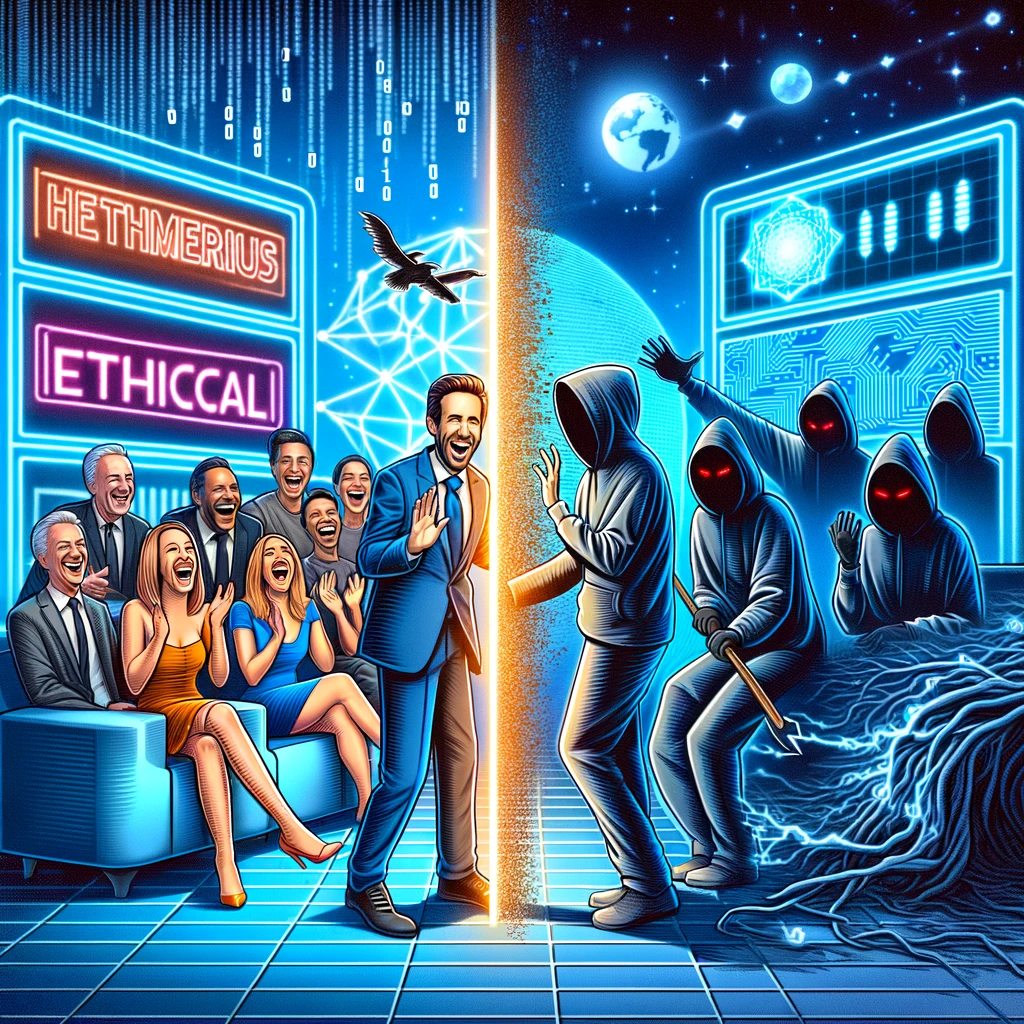
This illustration captures the ethical dilemmas of AI-powered voice cloning, juxtaposing its use in harmless TV pranks against the backdrop of malicious scams.

This illustration captures the ethical dilemmas of AI-powered voice cloning, juxtaposing its use in harmless TV pranks against the backdrop of malicious scams.
As detailed in a gripping report from The New Yorker, the rise of AI-powered voice cloning technology has given way to a deeply unsettling new breed of scams that prey on our fundamental trust in familiar voices. Unsuspecting individuals have found themselves at the mercy of convincing voice imitations of loved ones, manipulated into parting with money or personal information.
While these malicious exploitations rightly raise alarm bells, there exists a more lighthearted application of AI voice cloning in the realm of television pranks, though one that still carries ethical considerations.
In Italy, the popular TV program “Le Iene” (The Hyenas) has garnered attention for segments in which Sebastian Gazzarini and his team use AI-generated voice impersonations to prank celebrities and public figures. Their approach involves temporarily immobilizing the target, seizing his or her phone, and using an AI voice model to send messages impersonating the individual to his or her celebrity contacts.
However, unlike more nefarious AI voice scams, “Le Iene” conducts these pranks in the presence of the target victim. By the time the recipients of the AI-voiced messages attempt to call back or contact the victim again, they are alerted that it was merely a prank after the initial reaction is recorded.
While ultimately harmless, these stunts could spark discussions around the ethical boundaries of acceptable deception, even for entertainment purposes. Some could argue that the invasive tactics of physical restraint cross a line. In contrast, others could see value in highlighting the potential dangers of AI voice manipulation through exasperated, but controlled, demonstrations.
Indeed, the pranks of “Le Iene” stand in stark contrast to the chilling AI voice cloning scams detailed in The New Yorker’s report. From unsuspecting couples losing hundreds of dollars in ransom demands to mothers enduring the torment of believing their children have been kidnapped, the emotional and financial toll of these malicious deceptions is staggering.
As Hany Farid, a professor studying manipulated media at UC Berkeley, grimly stated, “I can now clone the voice of just about anybody and get them to say just about anything. And what you think would happen is exactly what’s happening”.
While “Le Iene’s” approach to AI voice pranks is relatively contained, the underlying technology’s potential for abuse should serve as a wake-up call for increased vigilance and regulatory oversight. As this capability becomes more accessible and affordable, the threat of malicious exploitation looms larger than ever.
Lawmakers are taking notice, with proposed legislation like the QUIET Act aiming to increase penalties for those who use AI to impersonate others unlawfully. However, as the Federal Trade Commission’s Will Maxson acknowledged, “There are no silver bullets” when policing these crimes.
In this rapidly evolving landscape, maintaining a healthy skepticism towards unfamiliar or unexpected voices, no matter how convincing, maybe our best defense against deception. For in the age of AI, even the most familiar sounds can mask the darkest of illusions.
